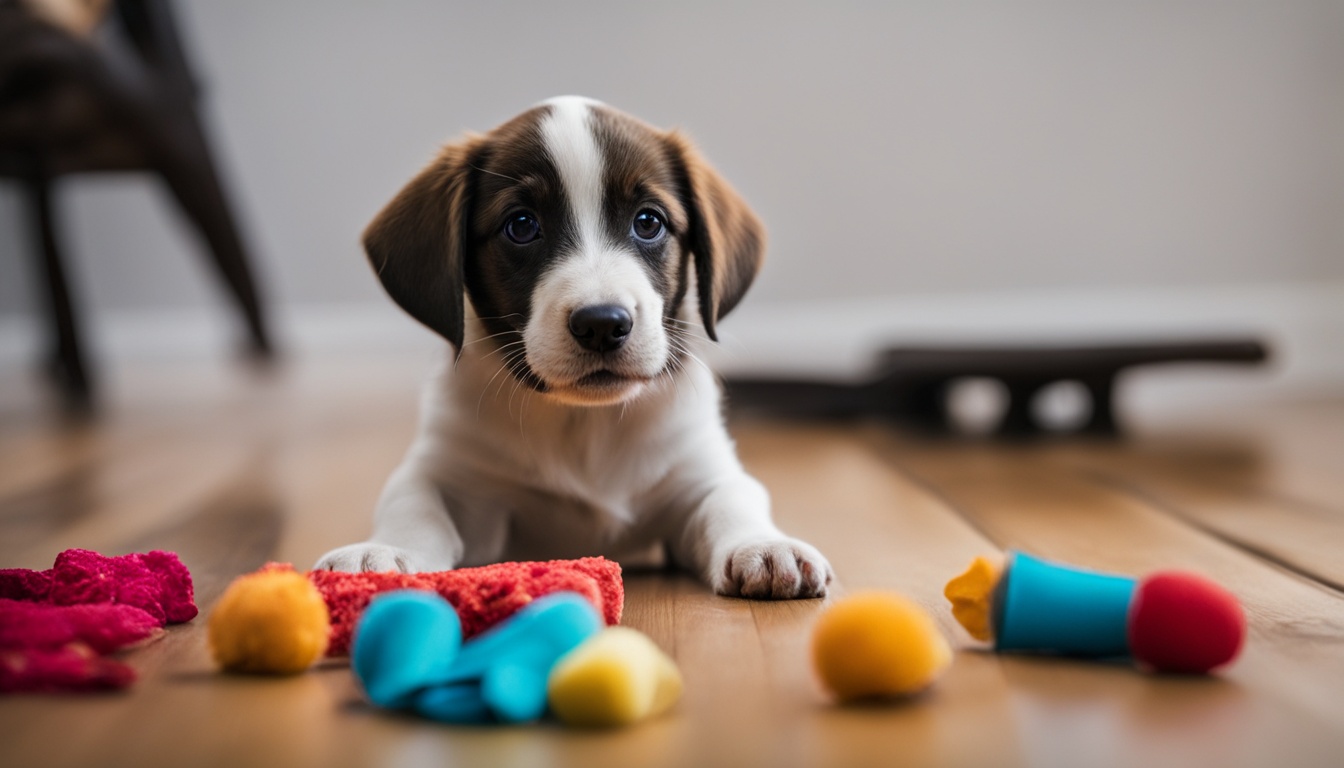Are you ready for the fun challenge of making your cute puppy a well-behaved family member?
As a new puppy owner, it’s key to learn the basics of puppy training. This includes picking out the right care items and learning how to train. Experts from the American Kennel Club (AKC), vets, and dog trainers share their advice to help you succeed.
Welcoming a new puppy is thrilling and a big responsibility. It’s not just about loving your puppy; it’s also about training and caring for them consistently. Are you ready to begin this amazing journey? Let’s explore the must-knows for every new puppy owner.
Quick Recommendation : Our blog is filled with tips , tricks, and methods for training your dog. If you are seeking a comprehensive training program, we recommend a Free Dog Training Workshop here: K9 Training Institute.
Choosing the Right Supplies for Your Puppy
Starting off right with your new puppy means having the right essentials. A detailed puppy supplies checklist is key. It ensures you have everything, like a collar, leash, food, bed, and toys. It’s vital to pick items that fit your puppy’s age and size for safety and comfort.
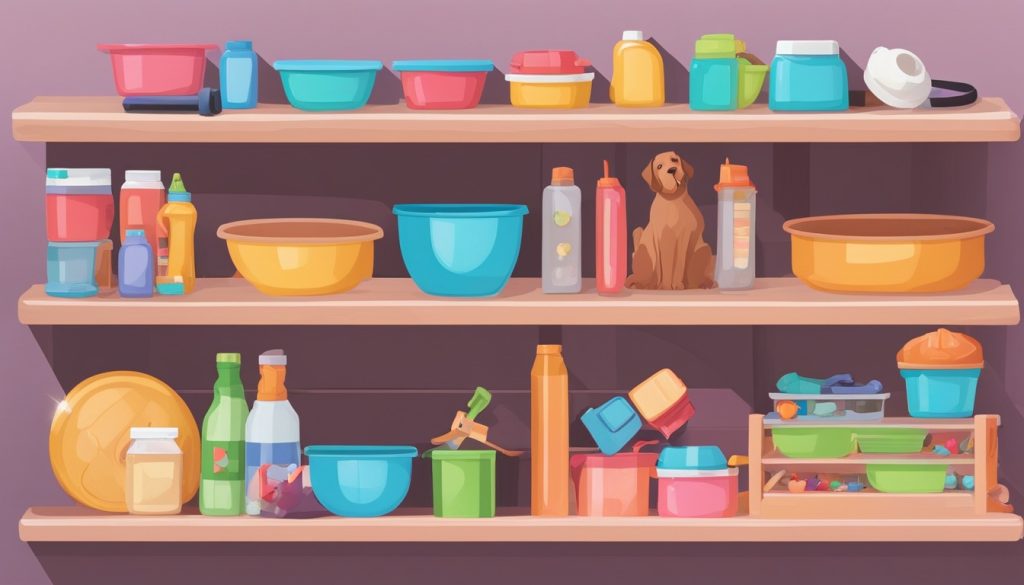
Quick Recommendation : Our blog is filled with tips , tricks, and methods for training your dog. If you are seeking a comprehensive training program, we recommend a Free Dog Training Workshop here: K9 Training Institute.
Getting a quality puppy starter kit can make things easier. These kits should have important items like feeding bowls, grooming tools, and training pads. Pet experts recommend brands like Kong, Nylabone, and Blue Buffalo for their quality puppy gear.
The right supplies make your puppy’s space comfy and help with training. They also boost your puppy’s health and happiness. Take the time to research and choose the best products. This sets the stage for a happy life with your new furry friend.
Creating a Safe Environment for Your New Puppy
Bringing a new puppy home is thrilling, but it also means you must keep them safe. First, make sure to remove dangers from your home. Secure electrical cords and keep small items away to stop choking.
It’s also key to know about toxic plants for dogs. Plants like lilies, azaleas, and pothos are harmful if eaten. Remove these from your puppy’s reach or put them where they can’t get to them.
Creating safe spaces for puppies is crucial too. Set up a special area with comfy bedding, toys, and water. This spot helps keep your puppy safe and gives them a calm place to rest and get used to their new home.
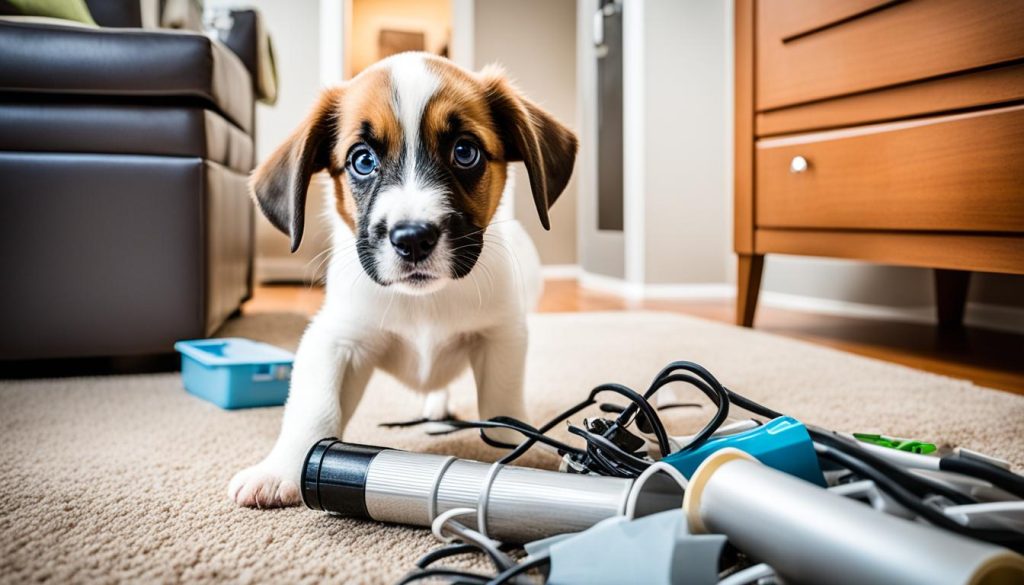
House Training Basics
House training your puppy is key to a happy home life. It’s important to set a consistent potty training schedule. You must learn your puppy’s signals and make a reliable routine for bathroom breaks.
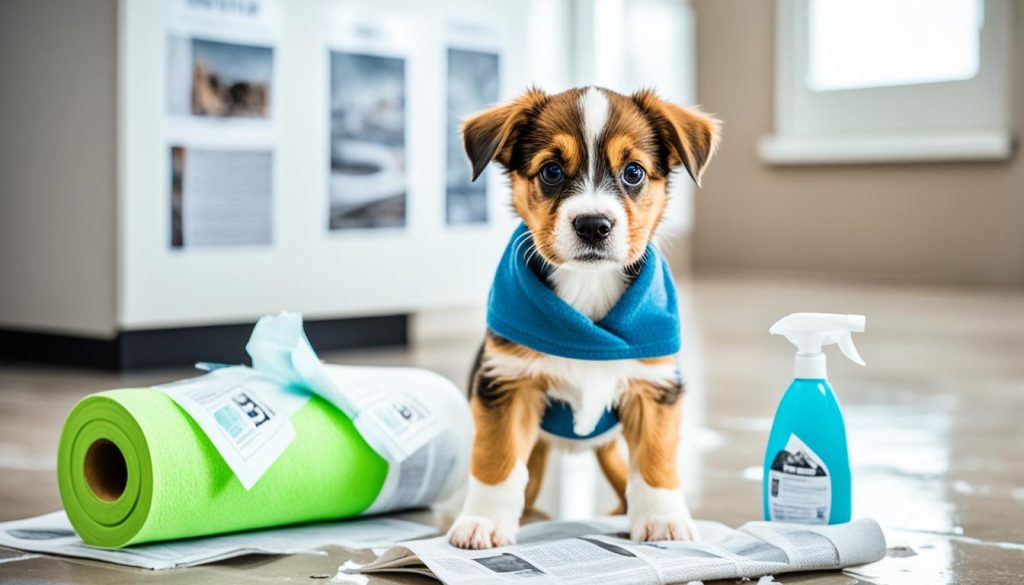
Start with regular daily routines for effective house training. Puppies need to go after eating, drinking, sleeping, and playing. A strict potty training schedule helps you catch your puppy at the right times, cutting down on accidents. Begin with frequent breaks, as puppies have small bladders.
Experts suggest using positive reinforcement to encourage good behavior. Praise and rewards for using the right spot are helpful. Remember, being consistent is crucial. With a structured schedule and patience, housebreaking will be easier and quicker.
Puppy Socialization Techniques
Socializing your puppy is key to their growth. It helps them become confident dogs. Early socialization shapes their behavior. It’s important to expose them to different things safely.
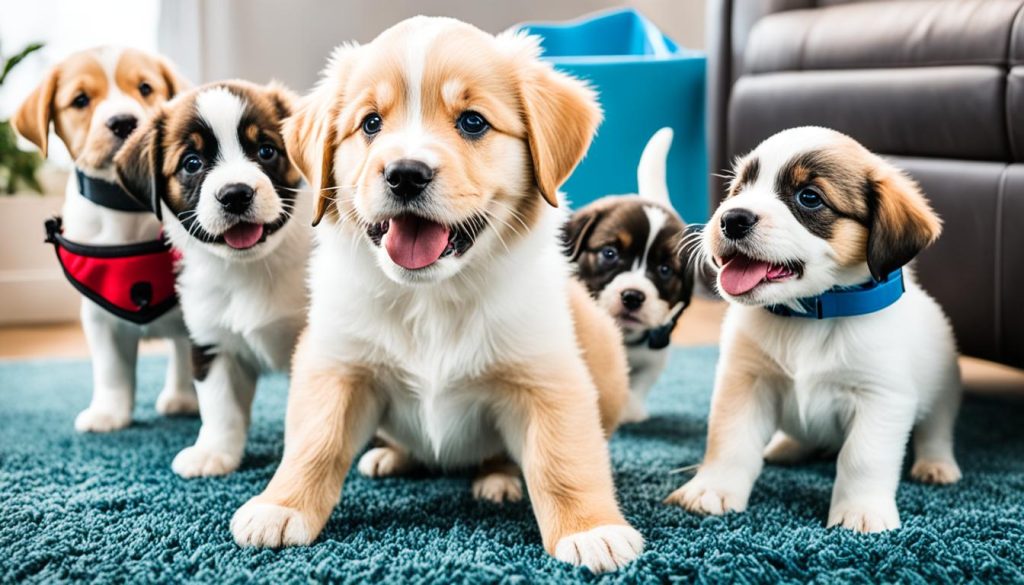
Starting with puppy play dates is a great way to socialize your puppy. These events let your pup meet other dogs and learn important social skills. Joining puppy classes is also a good idea. There, trainers can help you socialize your puppy and answer any questions you have.
Exposing your puppy to various people, animals, and places is crucial. Take them on walks to let them see new things. Visit pet-friendly places like stores and parks to help them meet others. Always make sure these meetings are positive and calm.
This careful planning helps your puppy be happy and confident with others. It sets them up for a life full of joy and social skills.
Setting Up a Crate Training Program
Crate training is key for housebreaking your puppy and giving them a safe space. It makes a predictable and secure place for your puppy, which lowers anxiety and encourages good behavior. Make sure the crate is big enough for your puppy to stand, turn around, and lie down comfortably. But, it shouldn’t be too big to keep them from seeing it as a bathroom spot.
Start crate training by slowly introducing your puppy to the crate. Put treats inside and let them go in with the door open. Then, feed your puppy in the crate and close the door for short times while you’re home. Keep increasing how long your puppy stays in the crate to help them get used to it.
Make the crate a cozy spot. Add a soft bed and some safe toys to make it inviting. Being consistent is important in crate training. Stick to a regular schedule that includes crate time at specific times, like during meals and at night. This helps your puppy see the crate as a safe and comfy place to relax.
Using these tips on crate size and crate training schedules helps your puppy adjust to their new routine. This makes housebreaking easier and gives your puppy a sense of security and comfort.
Quick Recommendation : Our blog is filled with tips , tricks, and methods for training your dog. If you are seeking a comprehensive training program, we recommend a Free Dog Training Workshop here: K9 Training Institute.
Basic Obedience Commands
Teaching your puppy basic commands like sit, stay, come, and down is vital. These commands help manage your dog’s behavior and strengthen your bond. They lay a solid foundation for obedience training.
Begin with short training sessions for puppies, lasting 5-10 minutes. This keeps them focused and learning fun. Use positive reinforcement to teach these commands. Reward your puppy with treats, praise, or toys when they obey.
This method encourages them to do it again.
To teach “sit,” hold a treat near your puppy’s nose. Move your hand up, and their head will follow the treat. This makes their bottom lower, putting them in a sitting position. Say “sit,” give the treat, and praise them.
For “stay,” start with your puppy sitting. Show an open palm and say “stay.” Then, take a step back. Reward them right away if they stay. Gradually increase the distance and time before giving the treat.
Teaching your puppy to “come” is crucial for their safety. Begin in a quiet area; crouch down and say “come” in a happy tone. Reward them with treats and affection as they come to you.
The “down” command helps control their excitement. Hold a treat near the ground between their paws. Say “down” as they follow the treat and lie down. Reward them right away.
Remember, patience and consistency are crucial in training your puppy. Regular practice of these commands will lead to a well-behaved, happy, and confident dog.
Addressing Behavior Issues Early On
It’s important to address puppy behavior problems early. Issues like too much barking, biting, or chewing can be fixed early. By catching these behaviors early, you can stop them from becoming worse.
Correcting bad habits in puppies means setting clear rules. If your puppy starts chewing on furniture, give them a chew toy instead. It’s important to be consistent in teaching what’s okay and what’s not. When your puppy does something wrong, correct them calmly and praise them when they do the right thing.
Positive discipline is key to teaching good behavior. Instead of punishing your puppy, reward them for good actions. For example, if they sit quietly instead of jumping up, give them a treat. This approach helps your puppy learn what’s good and reduces bad behavior.
The Importance of Consistent Training
Consistency is key in puppy training. Puppies learn best with repetition and predictable routines. Daily training helps set clear rules for your puppy.
Regular schedules teach your puppy what’s good and what’s not. Rewarding good behavior keeps training moving forward and helps your puppy grow.
Creating a daily routine means setting aside time for commands, tricks, and manners. This strengthens your bond and helps your puppy feel secure. The secret to good training is being consistent with methods and rewards, giving your puppy clear guidance every time.
Conclusion
Starting your journey in raising a puppy is exciting and full of important steps. You’ve learned about choosing the right supplies and making a safe home. You also learned how to house train and use socialization and crate training to help your puppy grow.
Being consistent is crucial for your puppy’s long-term training. It helps them become a well-behaved adult dog. Start addressing any behavior issues early and keep practicing basic obedience commands. This will make sure your dog does well in any situation.
Raising a well-behaved dog brings joy and fulfillment to your home. The love and effort you put in now will give you a lifetime of happiness with your dog. Keep up the good work and enjoy every moment with your puppy!
Quick Recommendation : Our blog is filled with tips , tricks, and methods for training your dog. If you are seeking a comprehensive training program, we recommend a Free Dog Training Workshop here: K9 Training Institute.

